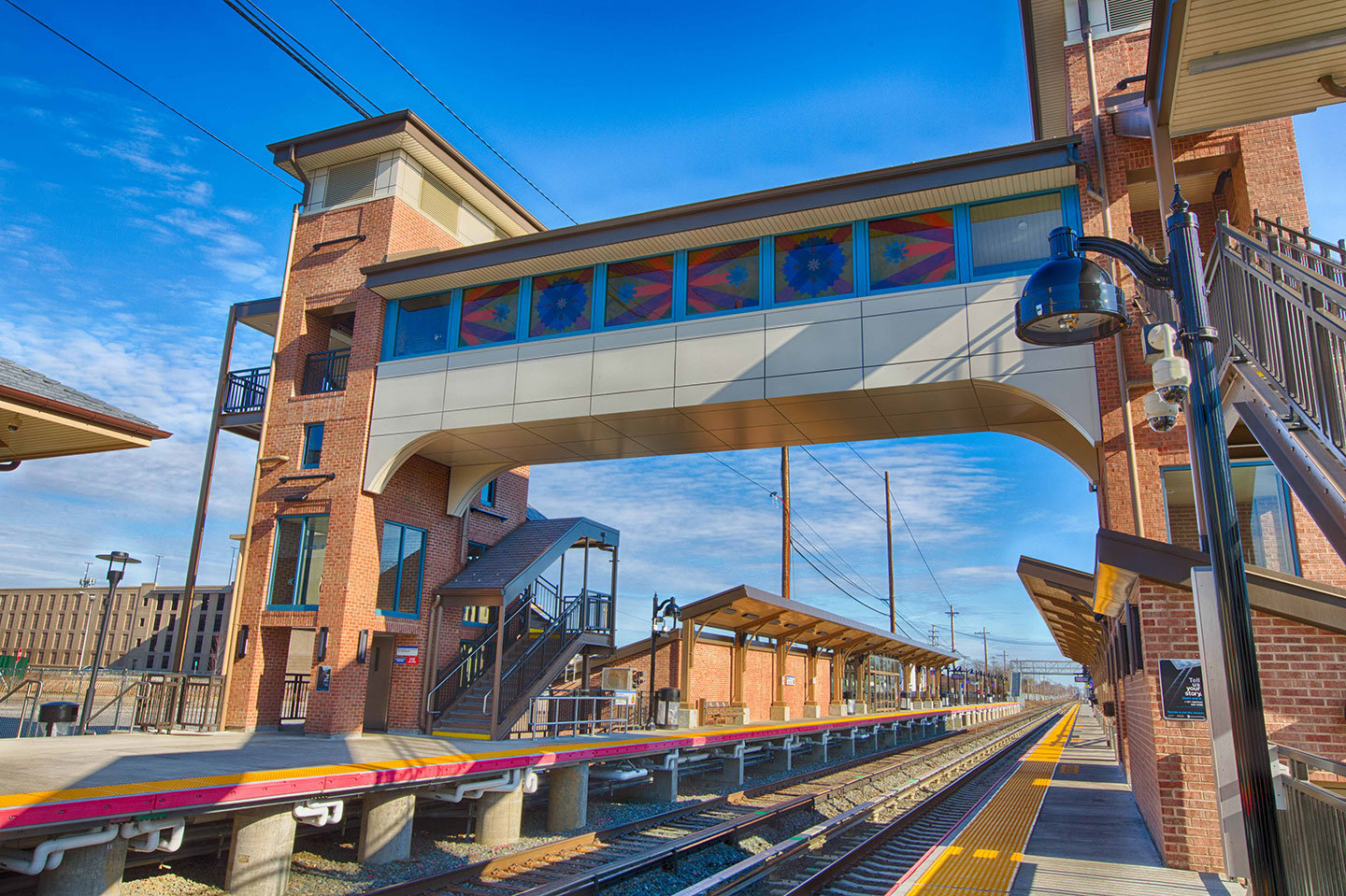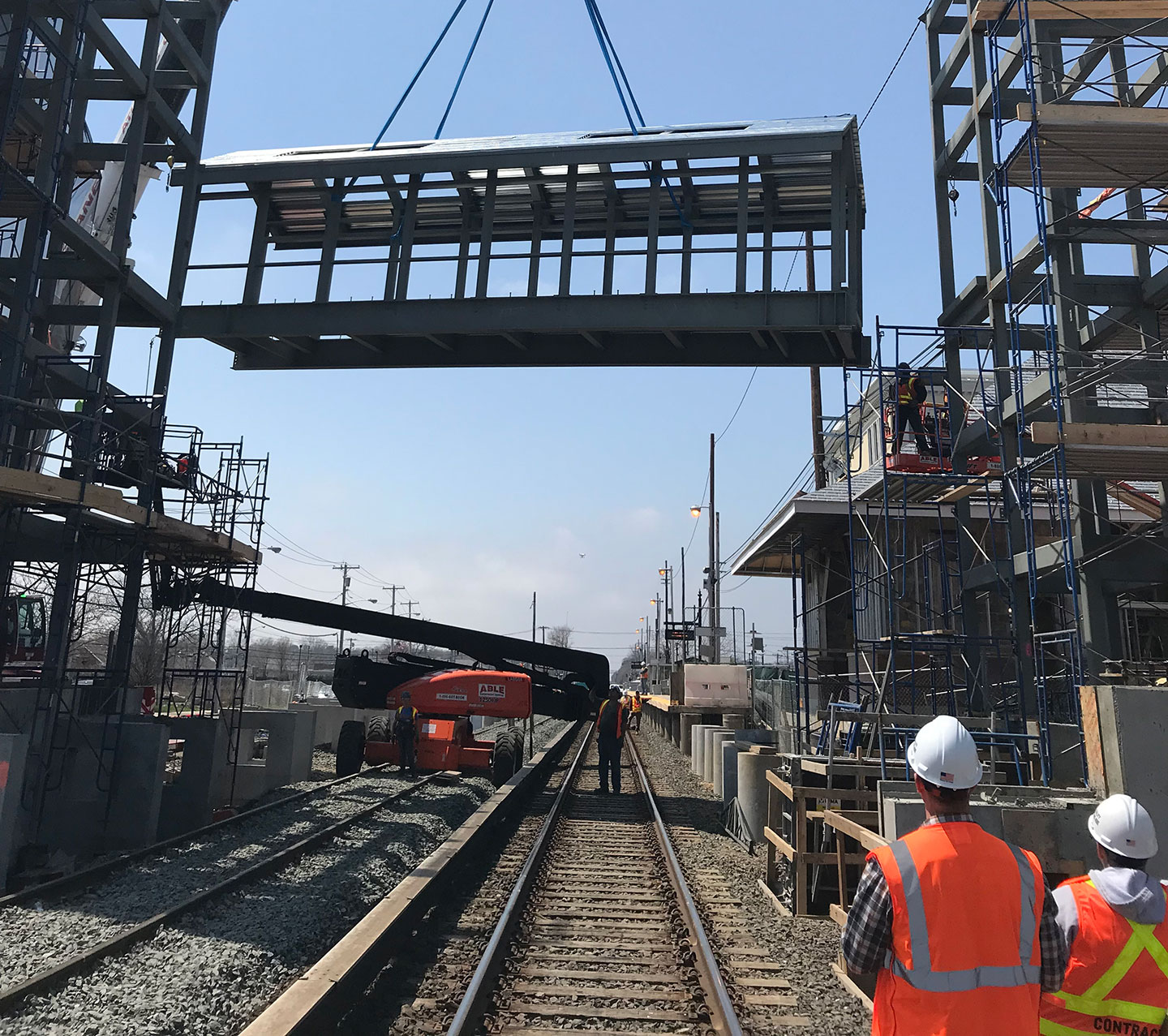The Long Island Rail Road (LIRR) dates to 1834 and is the oldest and busiest commuter rail system in the U.S. Owned and operated by the Metropolitan Transit Authority (MTA), the system includes 124 stations and more than 700 miles of tracks. The system
runs 24 hours a day, seven days a week, year-round, serving well over 100 million passengers each year.
I’ve been riding the LIRR from Long Island to work in Manhattan for nearly 40 years, and often rode the line as a teenager, so it has been a special privilege as a structural engineer to support the LIRR with projects to improve system infrastructure.
Recently, we completed an award-winning project to replace the Wyandanch Station and make track improvements along the Ronkonkoma Branch. This branch serves more than 4,000 commuters each day.

The Wyandanch Station is next to mine, so I stop there every day when commuting to the office. It was originally built in 1958 and rebuilt in 1987. Recently, with ridership to and from western Suffolk County having increased significantly, the MTA determined
the need to replace Wyandanch Station and selected the design-build team of Dewberry and L.K. Comstock and Company. This project was a key project in the LIRR’s program to modernize its inventory of station facilities, including making them
ADA-accessible. It was completed along with track improvements that have expanded service, added flexibility for reverse commutes, and minimized disruption due to disabled trains.
In the Details: American Craftsman Style
The station offers a number of amenities as well as two 12-car-long platforms that feature an innovative snow melt system. Components include a fabricated steel pedestrian overpass with elevators, new steel stairs and canopies, and platform shelters.
The station and canopies were designed in an American Craftsman style in keeping with a 19th-century architectural aesthetic. The use of steel in particular allowed our team to incorporate attractive Craftsman-style detailing.
The need to keep the trains running was paramount during construction. To reduce the down time for train operations, we completed this project in several phases, and relied extensively on prefabricated steel components, including the pedestrian bridge frame and deck, that could be assembled and erected over one weekend."
Keith Itzler
The need to keep the trains running was paramount during construction. To reduce the down time for train operations, we completed this project in several phases, and relied extensively on prefabricated steel components, including the pedestrian bridge
frame and deck, that could be assembled and erected over one weekend. The light weight and durability of the bridge as well as the platform canopies facilitated this rapid construction process.

Enhanced Durability: Preventing Corrosion
While speed was essential in the design and construction of the new Wyandanch Station, we gave careful consideration to measures that would promote longevity and minimize maintenance. The steel platform guardrails were metalized, or thermal spray-coated,
and then finished to prevent corrosion in the harsh winter weather. Exposed structural elements were coated with a high-performance, three-coat painting system to delay the need for repainting.
Completing a Project Close to Home
The LIRR has a goal of promoting transit-oriented development and the station, with its appealing design, is an important step in that process. The colorful “Arts for Transit” window treatments in the pedestrian overpass are another interesting
highlight that has proven popular with passengers.
Thanks to a focused design-build effort and the options available for prefabrication and quick assembly on site, we were able to meet the challenging schedule and keep the line in operation as much as possible. For me, the design of the new station was
a rewarding “backyard” project—an opportunity that rarely presents itself when practicing engineering in a major metropolitan area.